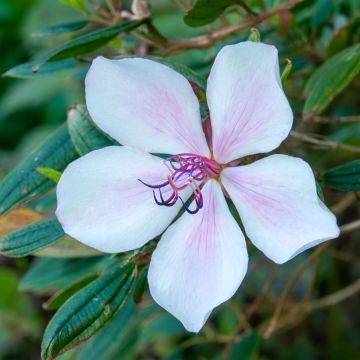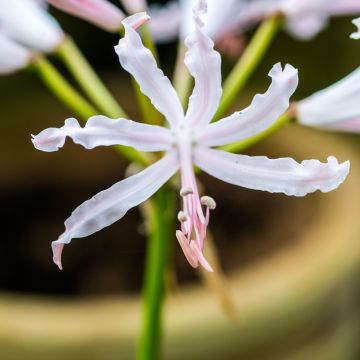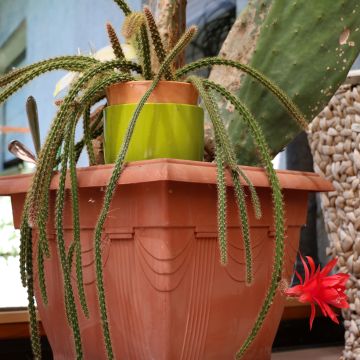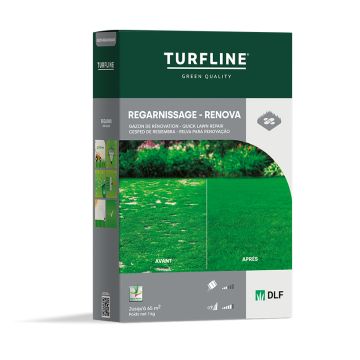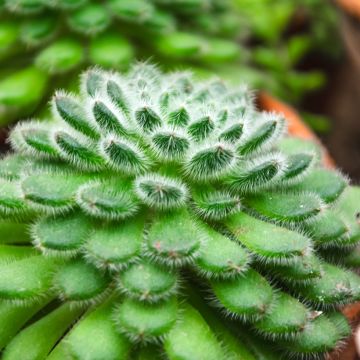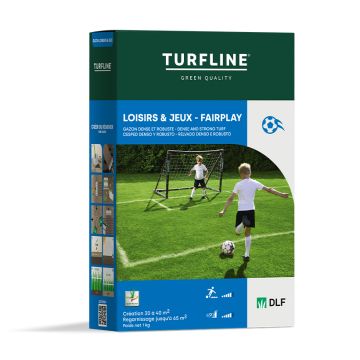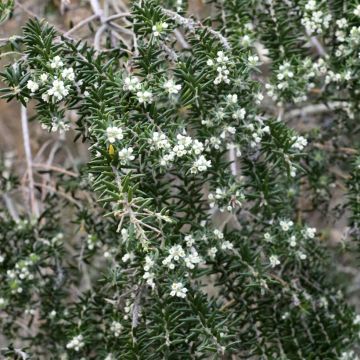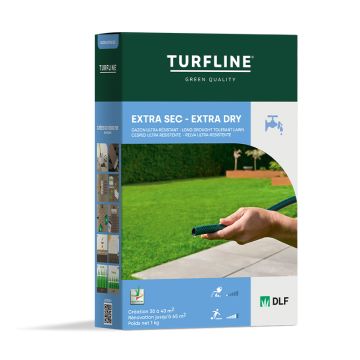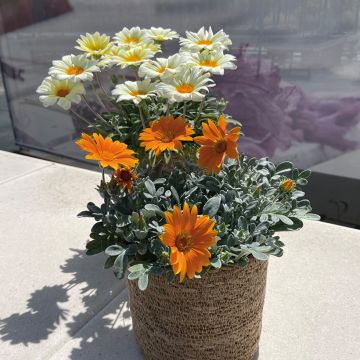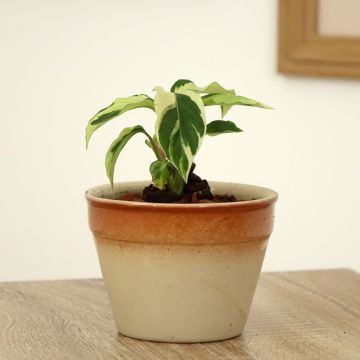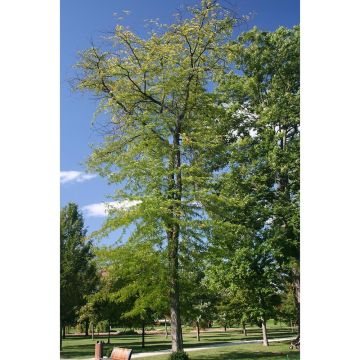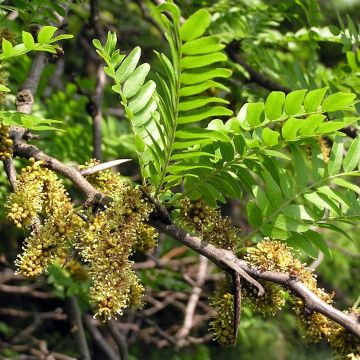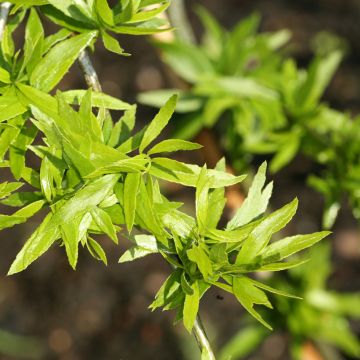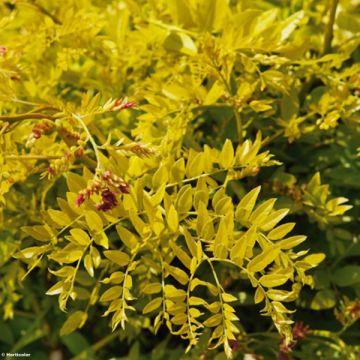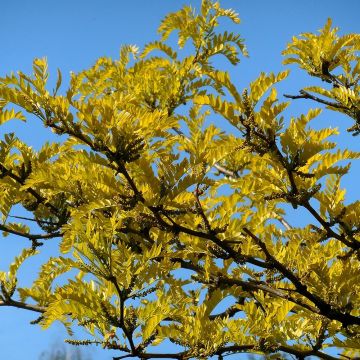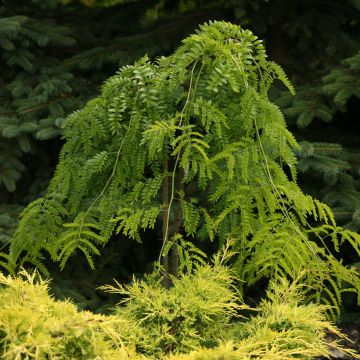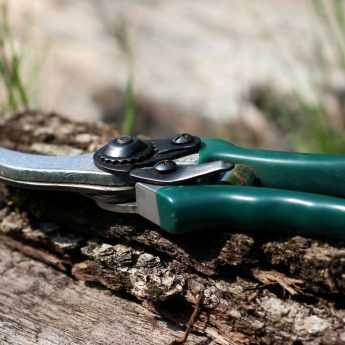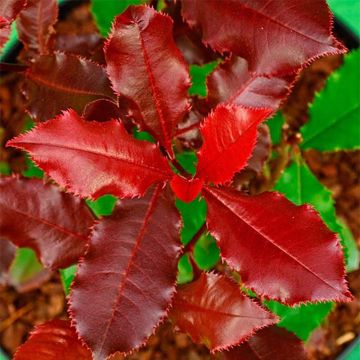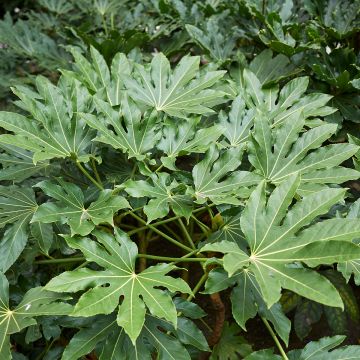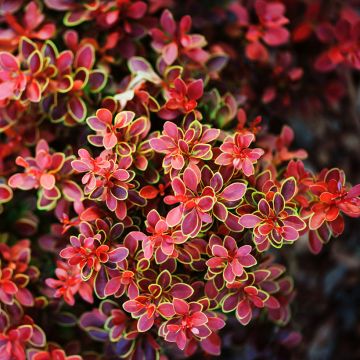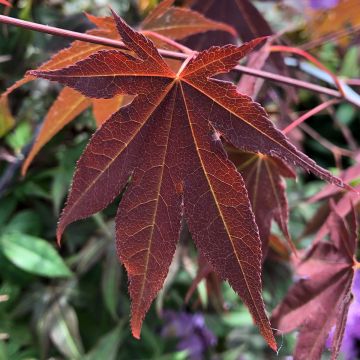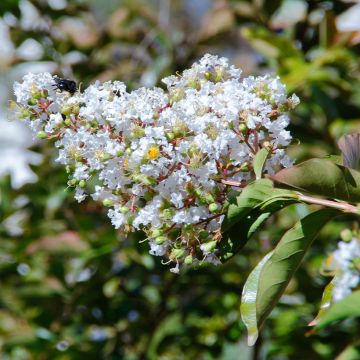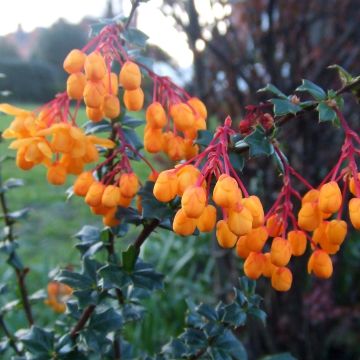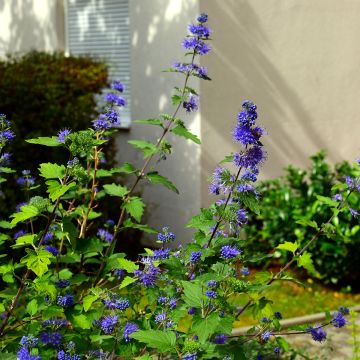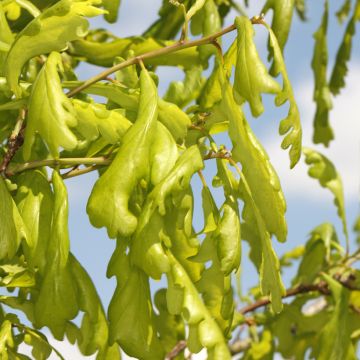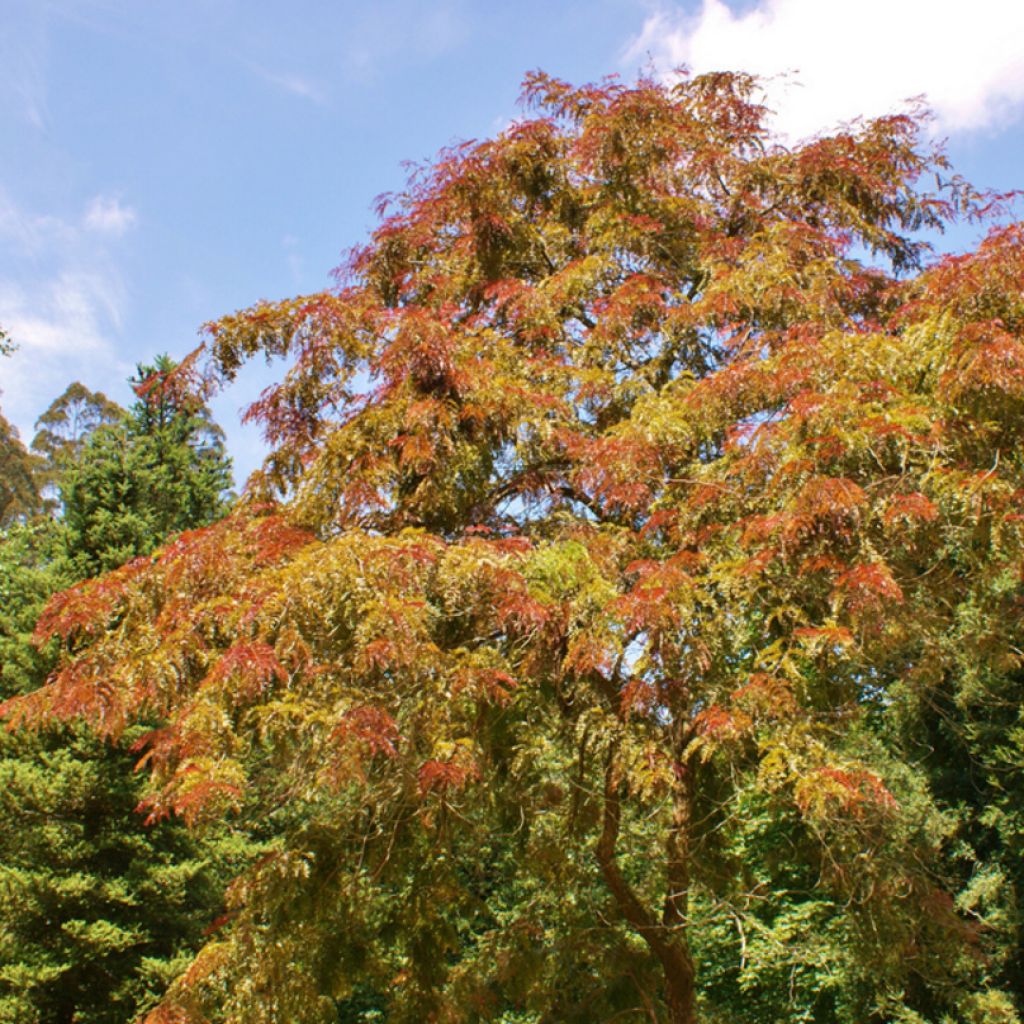

Févier d'Amérique pourpre - Gleditsia triacanthos Rubylace
Gleditsia triacanthos f.inermis Rubylace - Honeylocust
Gleditsia triacanthos f.inermis Rubylace
Thornless Honeylocust
It was slow, but it has recovered well and we protected it from the cold.
Cédric Pamela G., 07/01/2018
Why not try an alternative variety in stock?
View all →This plant carries a 24 months recovery warranty
More information
We guarantee the quality of our plants for a full growing cycle, and will replace at our expense any plant that fails to recover under normal climatic and planting conditions.
From €7.90 for pickup delivery and €6.90 for home delivery
Express home delivery from €8.90.

Does this plant fit my garden?
Set up your Plantfit profile →
Description
The Gleditsia triacanthos f.inermis 'Ruby Lace' is a magnificent variety of Americna Honey Locist with purple foliage, a surprising cousin of acacias and mimosas. Its deciduous foliage, shiny and finely cut like that of the albizzia, retains a purple hue from spring to summer that gradually gives way to green and bronze tones, while autumn paints it a deep yellow. With its airy and majestic habit it provides a light shade, and does not bear thorns. Superb as a standalone plant, highly colorful in a mixed hedge, this unique, hardy specimen, will adapt to all types of soil.
Gleditsia triacanthos is a tree of the fabaceae family, related to the carob tree, native to the eastern and central United States (from Nebraska, through Pennsylvania to Texas). Its growth is rapid, especially in moist soil. 'Ruby Lace' is a horticultural selection with remarkable foliage and thornless branches. Its silhouette, taller than wide, is airy towards the top, with drape-like vegetation. It will reach about 15m (49 ft 2 in) in height and 10m (32 ft 10 in) in spread. The foliage appears late at the end of spring, with large leaves that are finely divided into small, alternate, pinnate leaflets measuring between 14 and 25 cm (5.5 and 9.8 in). The foliage changes from reddish-purple in spring to yellow-orange in autumn, and is accompanied by a glossy texture that is transparent in day light. The upright tree trunk is dark and fissured. This tree is dioecious (there are male and female individuals), and its discreet summer flowering produces honey. Only the female trees bear mahogany coloured, flattened pods, 20 to 40 cm (7.9 to 15.7 in) long, in winter, with sweet, edible pulp. Young plants need protection from severe cold, but an mature specimen can withstand temperatures well below -15°C (5 °F). This tree has a deep taproot system which requires good soil depth.
One might wonder why the Thornless Honey Locust and its varieties are not more commonly planted despite being less hardy and not easier to cultivate. Perhaps this is due to its insignificant flowering, largely compensated by the splendor of its foliage. In summary, it is a perfect tree as a standalone in a large garden where it provides a little shade without preventing other plants from growing at its base. Its astonishing colors catch the light, representing a true alternative to break the monotony of certain foliage, such as lilacs, mock oranges, deutzias, once their flowering is over. As an ornamental tree and utility plant, Gleditsia has hard and dense, reddish-brown wood. This highly adaptable tree, while thriving in rich and moist, even poorly drained soil, tolerates dry, poor and limestone soils once well established.
Gleditsia triacanthos f.inermis Rubylace - Honeylocust in pictures
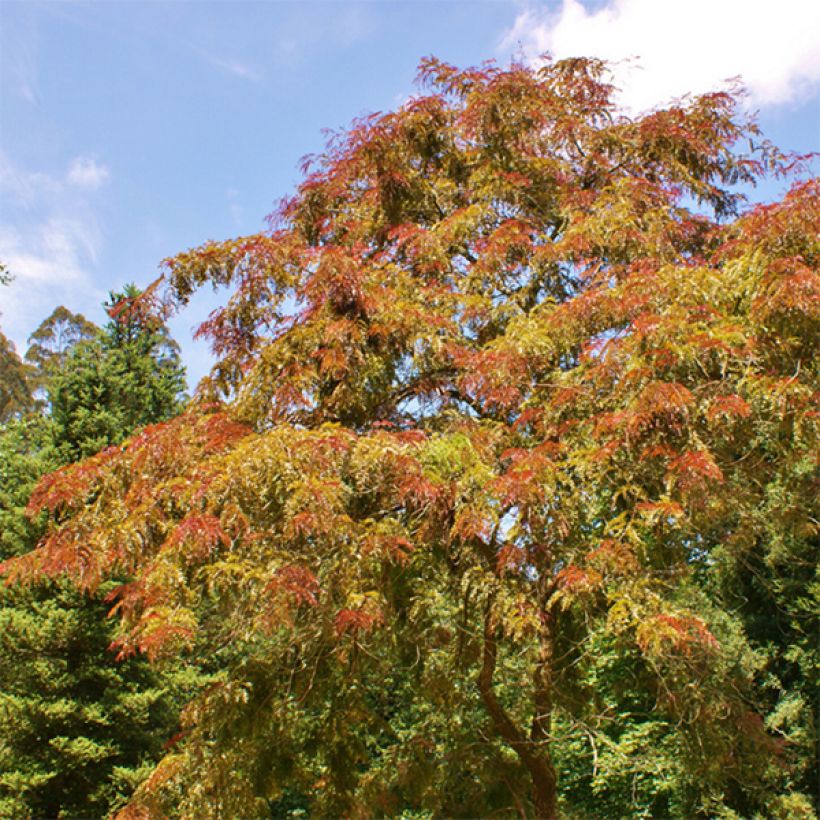

Plant habit
Flowering
Foliage
Botanical data
Gleditsia
triacanthos f.inermis
Rubylace
Fabaceae
Thornless Honeylocust
Cultivar or hybrid
Other Gleditsia - Honey Locust
View all →Planting and care
The Gleditsia triacanthos Rubylace prefers a sunny location and a rich but well-drained soil. It prefers a sheltered location as the wood is quite fragile. Make a deep planting hole and remove a thick layer of gravel, mix compost with your garden soil for organic matter, and add sand if necessary to lighten heavy soils such as clay. When young, you can protect it with a winter cover. Pruning is limited to the removal of dead branches, it does not require training pruning, as its trunk is naturally well spaced.
Planting period
Intended location
Care
Planting & care advice
-
, onOrder confirmed
Reply from on Promesse de fleurs
Striking foliage shrubs
Haven't found what you were looking for?
Hardiness is the lowest winter temperature a plant can endure without suffering serious damage or even dying. However, hardiness is affected by location (a sheltered area, such as a patio), protection (winter cover) and soil type (hardiness is improved by well-drained soil).

Photo Sharing Terms & Conditions
In order to encourage gardeners to interact and share their experiences, Promesse de fleurs offers various media enabling content to be uploaded onto its Site - in particular via the ‘Photo sharing’ module.
The User agrees to refrain from:
- Posting any content that is illegal, prejudicial, insulting, racist, inciteful to hatred, revisionist, contrary to public decency, that infringes on privacy or on the privacy rights of third parties, in particular the publicity rights of persons and goods, intellectual property rights, or the right to privacy.
- Submitting content on behalf of a third party;
- Impersonate the identity of a third party and/or publish any personal information about a third party;
In general, the User undertakes to refrain from any unethical behaviour.
All Content (in particular text, comments, files, images, photos, videos, creative works, etc.), which may be subject to property or intellectual property rights, image or other private rights, shall remain the property of the User, subject to the limited rights granted by the terms of the licence granted by Promesse de fleurs as stated below. Users are at liberty to publish or not to publish such Content on the Site, notably via the ‘Photo Sharing’ facility, and accept that this Content shall be made public and freely accessible, notably on the Internet.
Users further acknowledge, undertake to have ,and guarantee that they hold all necessary rights and permissions to publish such material on the Site, in particular with regard to the legislation in force pertaining to any privacy, property, intellectual property, image, or contractual rights, or rights of any other nature. By publishing such Content on the Site, Users acknowledge accepting full liability as publishers of the Content within the meaning of the law, and grant Promesse de fleurs, free of charge, an inclusive, worldwide licence for the said Content for the entire duration of its publication, including all reproduction, representation, up/downloading, displaying, performing, transmission, and storage rights.
Users also grant permission for their name to be linked to the Content and accept that this link may not always be made available.
By engaging in posting material, Users consent to their Content becoming automatically accessible on the Internet, in particular on other sites and/or blogs and/or web pages of the Promesse de fleurs site, including in particular social pages and the Promesse de fleurs catalogue.
Users may secure the removal of entrusted content free of charge by issuing a simple request via our contact form.

































